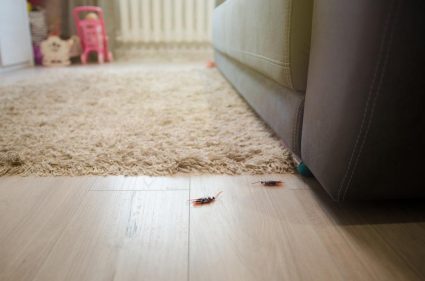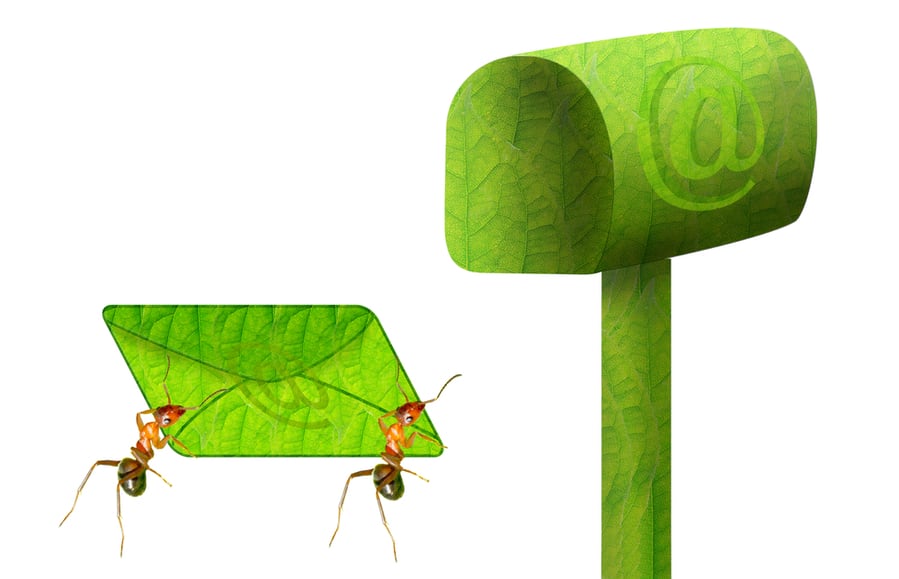
Ants are getting into your mailbox, and you don’t know how to stop them! It’s frustrating when ants invade your space, especially when they find their way to your mailbox.
You go out to check the mail, and dozens of these little critters are crawling all over it!
There are a few different ways to keep ants out of your mailbox:
- First, find and seal their entry point.
- Then, fill in any remaining gaps or holes.
- Remove food sources.
- Use ant repellant or ant spray.
This article will teach you how to keep ants out of your mailbox using natural methods that are safe for you and the environment.
Why Are There Ants in Mailbox?
There are several reasons why ants might be attracted to your mailbox. Maybe the ant colony is looking for a new place to live, or perhaps they’re just looking for some food.
Either way, getting rid of the ants before they become a nuisance is important. Here are the reasons why there are ants in your mailbox:
1. Moisture

One of the main reasons ants are attracted to mailboxes is the moisture that can accumulate inside. Therefore, mailboxes are often located in areas with high humidity, near a swimming pool or shady spot.
Any standing water or dampness will lure the ants back to the area, so keeping things dry is important.
2. Food Remnants

One possibility that ants might be attracted to your mailbox is that there is food residue near the mailbox, either from deliveries or from people putting food near the mailbox.
Ants can also transport food particles inside the mailbox with their mandibles and front legs.
3. Weather Conditions
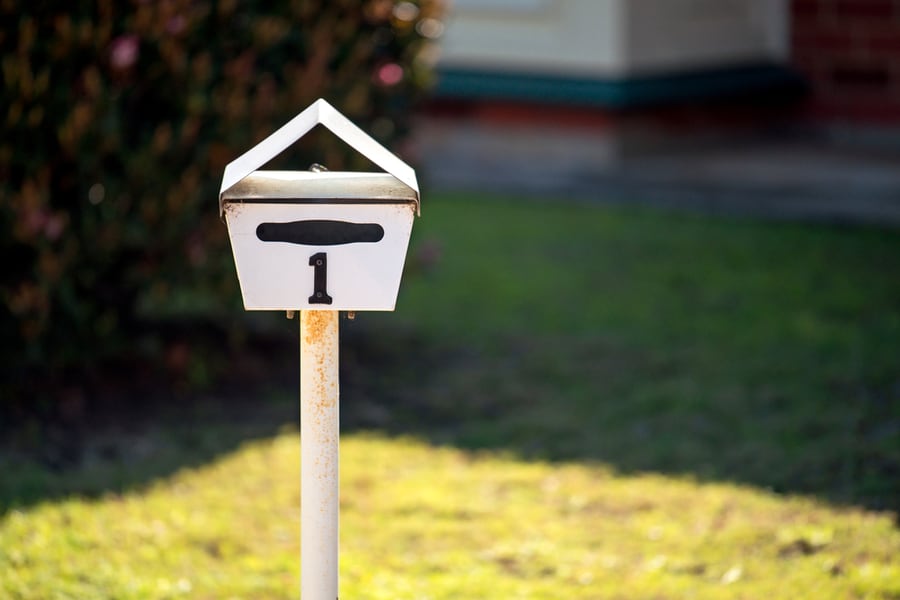
Ants are also attracted to mailboxes because of the weather conditions that often exist there.
Mailboxes are usually located in areas where it is warm and humid. This provides the perfect environment for ants to survive and thrive.
4. Ants in the Neighborhood
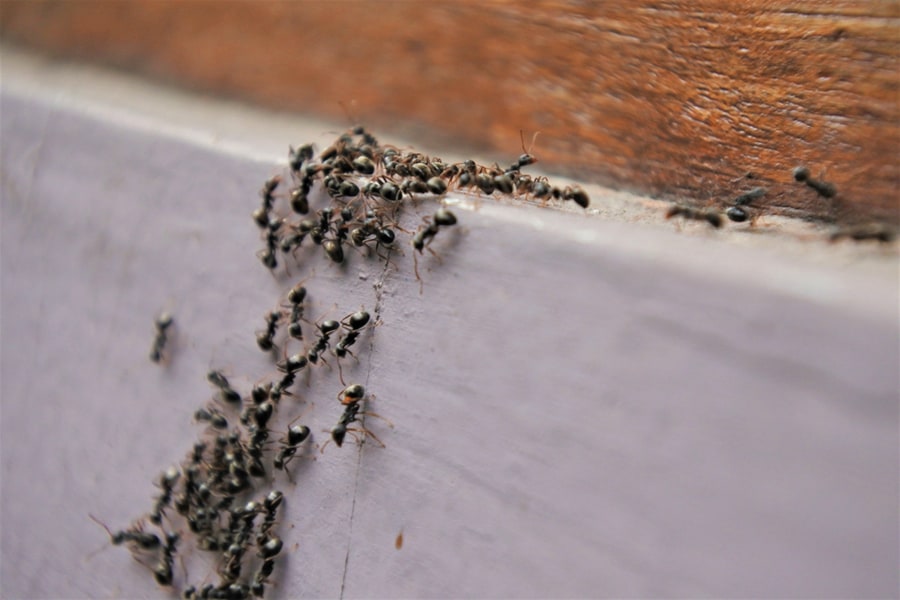
Another reason ants may be attracted to mailboxes is the other ants living in the area. When there are ants in the neighborhood, they are more likely to be attracted to mailboxes.
This is because ants often travel in large groups and follow each other to food sources.
5. Wood Mailbox Attracts Ants As Nesting Material

One final reason ants may be attracted to mailboxes is because the wood of the mailbox can be used as nesting material.
Ants often build their nests out of wood, and the wood of a mailbox can be the perfect material for this.
This is especially true if the mailbox is made of cedar or softwood.
How To Get Rid of Ants From Your Mailbox
If you have ever had ants in your mailbox, you know how difficult it can be to get rid of them.
Here are a few tips on how to get rid of ants from your mailbox:
1. Leave the Mail Box Open

A simple way to get rid of ants from your mailbox is to leave the mailbox open. This will allow the ants to escape and let you take a closer look at the problem so that you can figure out how they are getting in.
Consider using an ant trap or bait to help control the population.
2. Remove the Ants With Their Eggs and Larvae

If you want to get rid of ants permanently, you must remove the entire colony – including the eggs and larvae.
This can be difficult, as ants often hide in small crevices and cracks. But you can use a strong spray or insecticide.
Make sure to follow the instructions on the label carefully.
3. Use an Ant-Baiting System
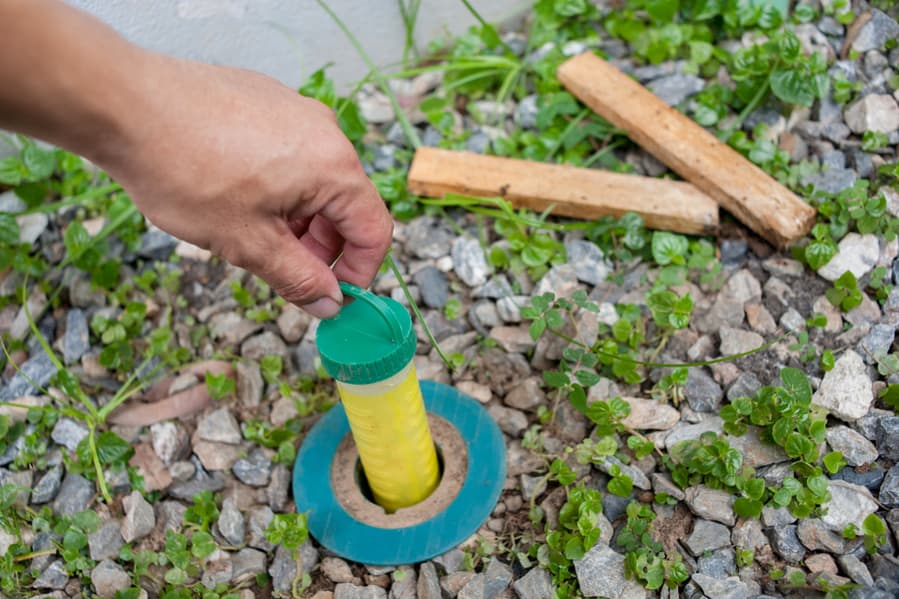
One of the most effective ways to get rid of ants is to use an ant-baiting system. These systems attract ants with a sweet or sugary substance and then poison them when they feed on it.
There are many different ant-baiting systems available, so be sure to choose one that is appropriate for the type of ants you are dealing with.
4. Apply Insecticide Dust to the mailbox

Insecticide dust can be effective at killing ants and other pests. However, they work by contact, so the ant must come into direct contact with the dust to be killed.
Be sure to apply the dust evenly around the mailbox and pay special attention to any cracks or crevices where ants hide.
5. Use a Pesticide Spray Around the Mailbox

Pesticide sprays work by killing ants on contact. They are typically more effective than insecticide dust but can also be more dangerous to humans and pets if not used properly.
Be sure to follow the instructions on the pesticide label carefully and only use the spray around the perimeter of the mailbox. Do not spray directly into the mailbox.
6. Call a Pest Control Professional

If you cannot get rid of ants in your mailbox, you may need to call a pest control professional.
Pest control professionals have the knowledge and experience to safely and effectively eliminate ants from your property.
They will also be able to advise you on how to prevent ants from returning in the future.
7. Dry It Out
If you have a moisture problem in your mailbox, it’s time to dry it. One way to dry out your mailbox is to use a dehumidifier. This will remove any moisture from the air, making it harder for ants to survive. You can also use a fan to circulate air inside your mailbox. This will also dry out the moisture and make it harder for ants to survive.
Ways To Keep Ants Out of the Mailbox in Future

These tiny pests can be a nuisance and damage your mail. Luckily, you can do a few things to keep ants out of your mailbox in the future.
1. Seal Their Entry Point
The first thing that you need to do is to identify where the ants are coming from. This can be not easy, but if you take a close look, you should be able to see where they are coming in from.
Once you have found the entry point, you will need to block it off. This can be done with a piece of tape or a rubber band.
Ensure the lid fits snugly on the mailbox and that there are no gaps or cracks where ants could squeeze through.
If you have a mailbox with a slot for incoming mail, consider covering the slot with a piece of tape or cardboard to prevent ants from getting in.
2. Remove Food Sources
The best way to get rid of ants in a mailbox is to keep the area clean and free of food sources that might attract them.
This means keeping garbage and crumbs away from the area. If ants are attracted to your mailbox because there is food nearby, they will be more likely to return.
3. Sprinkle Ant Powder
You can also deter ants from your mailbox by sprinkling a line of ant powder or granules around the base of the mailbox.
Ants will cross this barrier to go inside, but the powder or granules irritate their feet and discourage them from returning.
Be sure to reapply the powder or granules after it rains or whenever you see signs of ants.
4. Keep the Ant Box Clean
One way to keep ants out of your mailbox is to clean it regularly. Wipe down the inside of your mailbox with a damp cloth or sponge every week to remove any food or crumbs that may attract ants.
5. Use Ant Repellant
Finally, you can use a natural ant repellent such as vinegar or cinnamon. Simply mix a few drops of vinegar with water in a spray bottle and spritz it around the base of your mailbox.
The strong scent of the vinegar will repel ants and keep them away. However, you may need to reapply the repellent every few days to keep ants at bay.
Takeaway
There are several ways to keep ants out of your mailbox. For example, you can apply insecticide dust to the mailbox, use a pesticide spray around the perimeter of the mailbox, or set up an ant-baiting system.
You can also take measures to prevent ants from getting into the mailbox in the first place, such as finding and sealing their entry point, removing food sources, and filling in any gaps or holes.
Finally, keep the area around the mailbox clean and free of debris. If you find ants in your mailbox, you can use an ant repellent to eliminate them. You can keep your mailbox ant-free all year long with a little effort!




